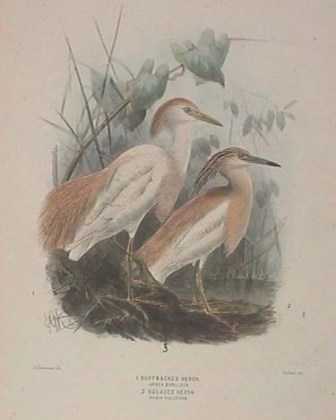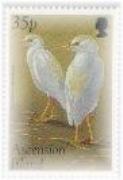
One of the farmers from the bottom end of the Valley called to tell me there were a pair of white herons, Kotuku, in his paddock. He said they were together with a number, or should I say a siege, of white-faced herons.
Excitement, but I am told that “small white herons” among stock are always cattle egrets. The small size distinguishes it from the white heron. The little egret is very rare. However, when the orange-buff breeding plumes develop, identification is certain.
Cattle egrets are self introduced and are therefore deemed natives and are fully protected. They have only recently colonised New Zealand, the first birds having been seen near Christchurch in the winter of 1963 although there were many unconfirmed sightings from the 1950s. A few years ago up to 3000 or more birds were arriving from Australia each winter. Numbers were steadily increasing and it was thought eventually some would not return to Australia for breeding but remain and nest here, but for some unknown reason the numbers have been declining for the last couple of years.
During the last 50 years cattle egrets have colonised a number of new countries. Australia was only colonised in 1948 but birds are now widespread there. They are now found on all continents except Antarctica and their range is increasing, a reversal of the depressing trend which sees so many birds in decline everywhere.
There are two subspecies of cattle egret. B. ibis of Africa which has spread to South and North America, crossing from Africa to the Americas via they Guianas with the assistance of the trade winds. The larger B. coromandus of southern and eastern Asia, spread south to Indonesia, Australia and New Zealand. Their arrival here was no doubt assisted by the roaring forties.
Flocks arrive in New Zealand in late autumn usually returning to the same farm or site. They regularly walk with cattle and other domestic stock, especially sheep. They also follow the plough and are occasionally seen in estuaries. The main food in New Zealand in winter appears to be earthworms, grass grubs, crickets and other insects but they also take frogs.
No breeding colonies have been found in New Zealand although a few birds remain each summer. In Australia, cattle egrets nest in colonies often with other egrets. Nests are in trees and three white eggs are laid. Both adults incubate and feed chicks by regurgitation. Youngsters scramble onto nearby branches as early as two weeks but do not fly until six seven weeks of age.
Waiotahi Valley, Opotiki, 1998.

Other common names: —
Buff-backed heron, elephant Bird, rhinoceros egret, hippopotomus egret, Indian cattle egret, Ardea ibis.
Description: —
Native bird
50cm, 360 g. Small stocky and short-necked (shorter than body) heron with yellow bill, grey legs and feet, and a heavy jowl of feathers under the bill. In breeding plumage, orange-buff plumes on head, neck and breast.
Where to find: —
The largest wintering flocks are in the Waikato and Manawatu. Some of the main sites are the far North, Auckland, Bay of Plenty, Hawkes Bay, Wairarapa, Nelson, West Coast, Canterbury, Otago and Southland.
Credit for the photograph: —
Illustration description: —
Dresser, Henry E., Birds of Europe, 1871–1896.
Reference(s): —
Heather, B., & Robertson, H., Field Guide to the Birds of New Zealand, 2000.
Oliver, W.R.B., New Zealand Birds, 1955.
Burbidge, A., Reader’s Digest, Complete Book of New Zealand Birds, 1985.
Page date & version: —
Saturday, 17 May, 2014; ver2009v1

